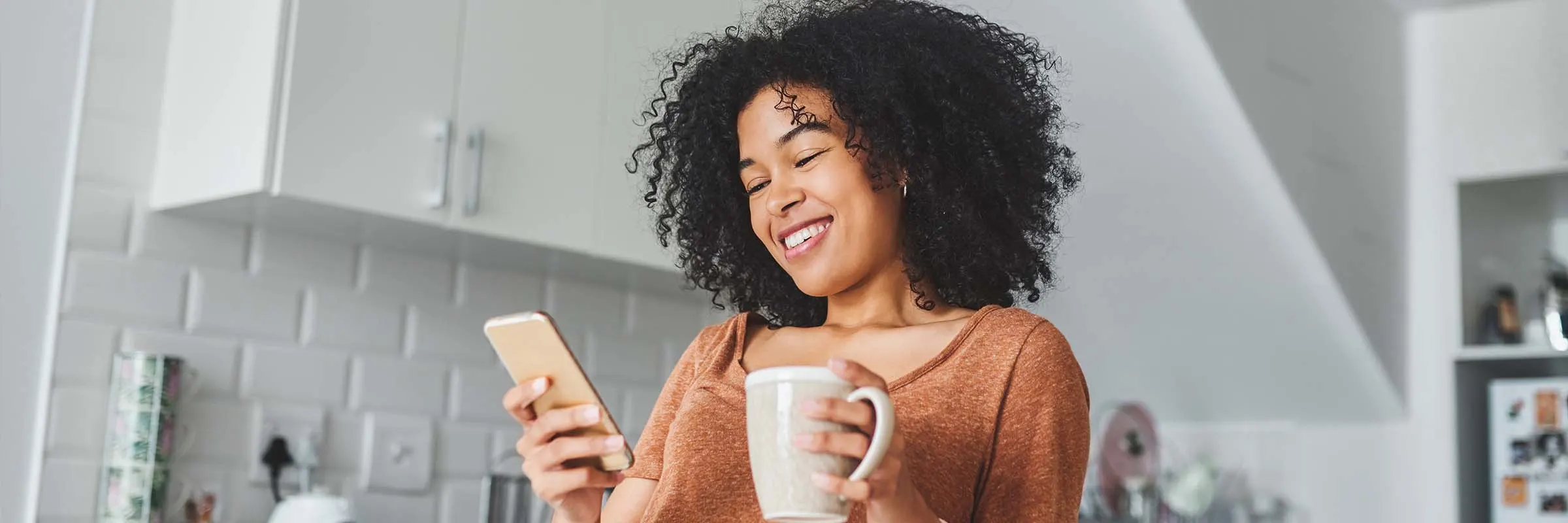What we'll cover
How to calculate a down payment amount
Payment sources to avoid when buying a home
Best ways to save for your down payment
A down payment is an essential part of homebuying. But if you have never purchased a property before, you might not know the ins and outs of what a down payment is. We've got you covered with answers to common questions — from how much money you need for a down payment to ways you can come up with the cash.
What is a down payment? And how much do you need for one?
Simply put, a down payment is a percentage of your home's purchase price that you pay up front when you open a home loan.
The amount depends on your home's purchase price and the type of loan you choose. A common homebuying myth is that you must put down 20% of a home’s price, whether you’re getting a fixed-rate or adjustable-rate mortgage. (If you’re buying a $300,000 house, that’s a down payment of $60,000.) There are other home loan options that may work better for your homebuying budget. With Ally Home, you can become a homeowner for as little as 3% down through the HomeReady® mortgage program.
Take quiz: Which mortgage is right for you?
Use this quick and easy calculator to figure out how much down payment you can expect to pay:
What are some ways you can source a down payment?
You have several options when making a down payment:
Gifted Money: Unlike borrowed money, gifted money should not be repaid. You may need to provide proof the money was gifted in the form of a letter or statement from the gift giver, and some lenders may restrict who can gift you the money. Depending on the loan, you may also be required to chip in some of your own money.
Retirement funds: First-time homebuyers may choose to tap into a Traditional IRA, up to $10,000 without being subject to the additional early distribution tax, to make a down payment. You also could consider a 401(k) loan, which unlike a 401(k) withdrawal, allows you to avoid a withdrawal penalty if you’re younger than age 59 ½ and the amount will not be subject to income tax. But there are some rules around how much you can borrow, and you’ll have to repay the loan with interest. You should always consult a tax professional before withdrawing retirement funds to determine the best choice for your situation.
Down payment assistance programs: If you’re a first-time homebuyer, you might qualify for financial support from a government agency or private organization, like a nonprofit. Payment assistance may be available via grants, forgivable loans with 0% interest, matched savings programs, deferred-payment loans with 0% interest, or low-interest loans. Amount and eligibility requirements vary, but are usually based on your income, credit history and location.
Ally Home Grant: You may be eligible for a $5,000 grant that can go toward your down payment and/or closing costs. Once you get the grant, you do not need to worry about repaying the money. Check to see if you qualify for the Ally Home Grant.
What should you avoid when sourcing a down payment?
When it comes to buying a house, some of the more typical sources of cash are off limits, including:
Personal loans: Generally speaking, personal unsecured loans cannot be used for a down payment. Because unsecured loans aren’t backed by collateral, lenders generally view down payments from them as higher-risk transactions.
Borrowing money from family and/or friends: The key word here is “borrowed.” If you have to pay it back, lenders are going to see it as an additional risk.
Credit cards: Aside from most credit limits not being high enough to cover a down payment, most lenders do not permit credit card payments to be used for down payment funds.
If homeownership is a future you’re saving for today, consider keeping your money in a high-yield savings account, like Ally Bank’s Savings Account.
What if you don't have enough to put 20% down?
If your down payment is less than 20% of your purchase price, you can still get a mortgage loan, but you will most likely be required to pay for private mortgage insurance (PMI). When PMI is added to your loan, you will pay monthly premiums as part of your mortgage payment until you have paid off roughly 20% of the amount borrowed.
Additional low down payment options
You could go with a loan that does not require a down payment of 20%. Along with the HomeReady® mortgage program mentioned earlier, you could look into loans from the Federal Housing Administration (FHA), Freddie Mac and Fannie Mae, the Department of Veteran Affairs (the VA) and the United States Department of Agriculture (USDA). Not every lender will offer all of these types of loans, so ask them which options are available.
If you're saving money for a down payment, where's the best place to keep it?
If homeownership is a future you’re saving for today, consider keeping your money in a high-yield savings account, like Ally Bank’s Savings Account. In addition to earning a competitive rate, you can use our Buckets tool to divvy up your down payment funds from your other savings goals.


